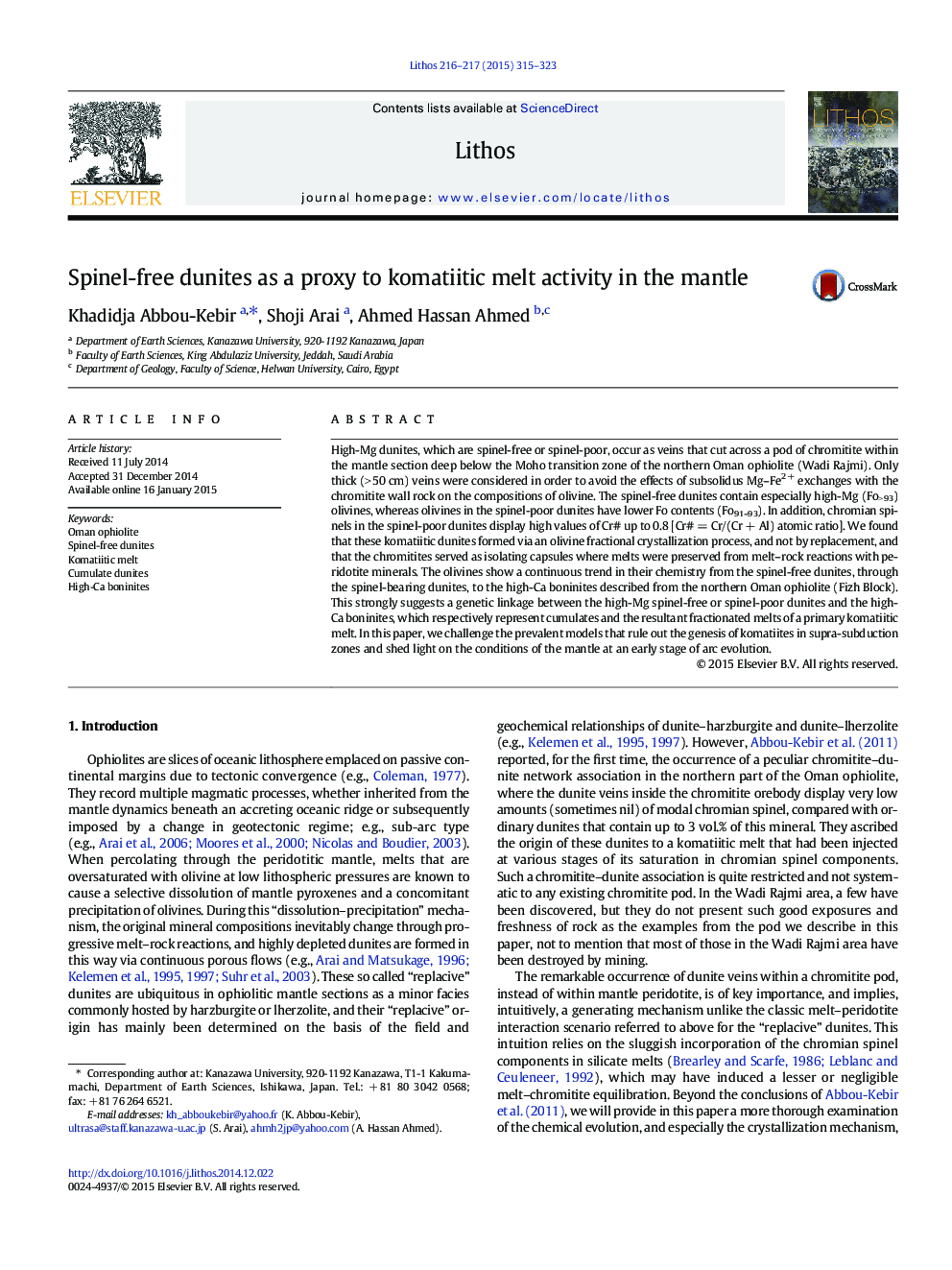| Article ID | Journal | Published Year | Pages | File Type |
|---|---|---|---|---|
| 6440781 | Lithos | 2015 | 9 Pages |
Abstract
High-Mg dunites, which are spinel-free or spinel-poor, occur as veins that cut across a pod of chromitite within the mantle section deep below the Moho transition zone of the northern Oman ophiolite (Wadi Rajmi). Only thick (> 50 cm) veins were considered in order to avoid the effects of subsolidus Mg-Fe2 + exchanges with the chromitite wall rock on the compositions of olivine. The spinel-free dunites contain especially high-Mg (Fo> 93) olivines, whereas olivines in the spinel-poor dunites have lower Fo contents (Fo91-93). In addition, chromian spinels in the spinel-poor dunites display high values of Cr# up to 0.8 [Cr# = Cr/(Cr + Al) atomic ratio]. We found that these komatiitic dunites formed via an olivine fractional crystallization process, and not by replacement, and that the chromitites served as isolating capsules where melts were preserved from melt-rock reactions with peridotite minerals. The olivines show a continuous trend in their chemistry from the spinel-free dunites, through the spinel-bearing dunites, to the high-Ca boninites described from the northern Oman ophiolite (Fizh Block). This strongly suggests a genetic linkage between the high-Mg spinel-free or spinel-poor dunites and the high-Ca boninites, which respectively represent cumulates and the resultant fractionated melts of a primary komatiitic melt. In this paper, we challenge the prevalent models that rule out the genesis of komatiites in supra-subduction zones and shed light on the conditions of the mantle at an early stage of arc evolution.
Keywords
Related Topics
Physical Sciences and Engineering
Earth and Planetary Sciences
Geochemistry and Petrology
Authors
Khadidja Abbou-Kebir, Shoji Arai, Ahmed Hassan Ahmed,
